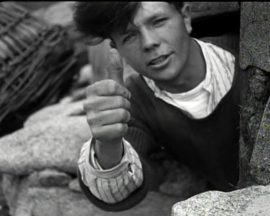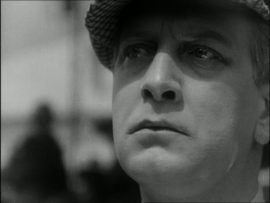Jean Epstein’s legacy, in relation to his work both as filmmaker and film theorist, has often centered on his development of the idea of photogénie, a notion usually accompanied by apologies for its abstraction, anagogy, or outright inexplicability. The perceived need for apologies might to some degree contribute to the relative neglect of Epstein for film scholars. Why pin one’s hopes on a figure whom many, as Tom Gunning laments, “have dismissed as a visionary (a poet, a mystic who naively sees cinema as offering almost a millennial promise)”? In certain circles, Epstein is described as someone who addresses cinema in a “near-mystical”, “naïve”, “sentimental”, or even “supernatural” way; more, he upholds a concept (photogénie) “notoriously difficult to pin down” and “contested.” However, several theorists have attempted to rescue Epstein and the term for which he is remembered from these disparagements. In her essay “The Close-Up: Scale and Detail in the Cinema,” Mary Ann Doane affirms that photogénie “is usually considered to be theoretically incoherent. No doubt this is due to the fact that photogénie is designed to account for that which is inarticulable, that which exceeds language and hence points to the very essence of cinematic specificity.” For discussions of both historical and contemporary film aesthetics, Epstein offers valuable insights not limited to claims about the “soul” of the cinema (nor are his remarks about such aspects of cinema quite so flimsy as one might believe). The recovery of Epstein for cinema studies points to the compelling complexity of his thought and the ways in which it is applicable to the present moment. Despite certain prejudices and obstacles, a new wave of interest in Epstein’s writings and films has emerged. So what might we say about why Epstein has become more widely appealing again now?
Of course, although it is indeed curious how often in the margins he has been at least in Anglophone film history, Epstein has never been left out of the conversation. As Gunning notes, there was an important spate of interest in Epstein during the 1970s-1980s following a retrospective at Anthology Film Archives (New York) of his film work and extending from there to the scholarly efforts of then-emerging figures in academic cinema studies, including David Bordwell’s dissertation on French Impressionist Cinema (1974), Stuart Liebman’s dissertation on Epstein’s early work (1980), and Richard Abel’s two-volume collection of translations of French film criticism accompanied by his invaluable editorial introductions to the material (1988). Moreover, in European cinema studies, Epstein has been more central more or less continuously.
In the present moment, studies of Epstein are again enjoying a great deal of momentum, assisted by renewed exposure to the films through the Cinémathèque Française’s recent expenditure of an enormous effort to restore most of the Epstein film oeuvre. Only a handful of Epstein’s films were readily available outside of archives before this remarkable achievement. The results of their restorations have been making some inroads worldwide (e.g. recently a nearly complete retrospective at the Cinémathèque Québecoise in Montréal and a similar program back at Anthology Film Archives, as well as several prints showing at the Melbourne International Film Festival and, in the near future, several of the short films in a program sponsored by the University of Antwerp). Screenings of the films and the relatively recent opening of the archives of Epstein’s work in Paris have encouraged research on Epstein, inspiring work by an enthusiastic set of his supporters who are releasing films and books and planning symposia about Epstein and his work (e.g. James Schneider’s film Jean Epstein: Young Oceans of Cinema; the anthology Jean Epstein: Critical Essays and New Translations, edited by Jason Paul and myself; Christophe Wall-Romana’s forthcoming monograph Jean Epstein and his translation of the entirety of Epstein’s L’Intelligence d’une machine; an international colloquium on his work at the Université de Rennes in 2013). And despite a delay in their release schedule, the small company Potemkine has announced the development of a DVD box set of as many as a dozen of Epstein’s films, at last word due out sometime early next year. These efforts have extended Epstein’s exposure to new audiences. Increased acquaintance with his films and writings ought by rights to continue bringing Epstein to a more pivotal position both in historical and contemporary studies of cinema.
In addition to the attraction of his writings and films in their own right, as Gunning has suggested, the current resurgence of attention to Epstein may be due to similarities between now and Epstein’s own historical context, a time within which there arose cinema’s “greatest moment of excitement and discovery—a period in which its possibilities seemed boundless and its implications yet to be theorized”: a moment ripe for shaping the terms of cinema’s technological and artistic claims. Like that moment, “our times demand, once again, such a penetrating and untrammeled expectation of what our new media could achieve”. Epstein’s thought provides a model for navigating radical change in the cinema, not least of all because of his emphasis on fluidity and mobility, two aspects of the cinema intimately connected to but also transcending the boundaries of cinematic experience and the terms of photogénie.
Photogénie is usually described as a moment of intense affect or revelation created by the cinema’s unique technological and formal capacity to transform our perception of the material world. It holds vital significance, not only for Epstein and his milieu but also for current reevaluations of spectatorship, affect, and perception in a rapidly changing media environment. The history of photogénie as a concept has been insightfully explicated by Katie Kirtland in her forthcoming dissertation’s chapter “What Was Photogénie?” as well as (in less detail) by several histories of French cinema or film theory. Kirtland lays out a complex set of the adjoining contexts out of which Epstein’s particular notion of photogénie developed. These include debates from literature (the critical response to Léon Bloy versus Émile Zola, for example) and painting (Alphonse Germain’s photogéniste aesthetic vanguard contra both “Salon photographisme” and Symbolism), as well as eventually those debates relating to photography and the cinema. In all of these contexts, she argues, the key factor for an art predicated on photogénie involves its grappling with the “long-standing modernist tradition in France that is committed to maintaining a positive, if asymptotic, relationship to the ‘reality’ of the external world as a necessary condition of transcendence, but which consistently defines itself in opposition to photography, understood as passive description, and/or an excessive reliance upon technical virtuosity or stylistic convention.” In addition to its emphasis on affect, revelation, and fluidity, the tension between these poles—that is, passive, mechanical recording versus active, creative agency—drives the concept of photogénie. In fact, this final aspect is often elided in descriptions of photogénie in Anglophone film studies, which tend to fixate on a handful of important early texts by Epstein, including “The Senses I(b)” and “On Certain Characteristics of Photogénie.” The relative dearth until recently of available translations has left emphasis to fall on a few (certain) characteristics of photogénie over others. Drawing on these essays, the aspects that receive the greatest attention include photogénie’s “momentary” nature—Epstein claims it occurs “in fits and starts,” and that he has “never seen a full minute of pure photogénie”—as well as photogénie’s enhancement of objects and persons by filming them. In “On Certain Characteristics of Photogénie” Epstein outlines the terms of the concept even while he abstains from pinning it down entirely; for instance: “I would describe as photogenic any aspect of things, beings, or souls whose moral character is enhanced by filmic reproduction. And any aspect not enhanced by filmic reproduction is not photogenic, plays no part in the art of cinema.” The act of filming renders the thing filmed transformed, partly by the operation of distance enfolded in Epstein’s aesthetic, as Jennifer Wild has shown in her essay “Distance is Immaterial: Epstein Versus Etna”. Conceding the distance (even a proximate distance) necessary for comprehension and contemplation of the world allows the technological and the ineffable to join in a productive merger. That is, filming introduces one step of removal from the object filmed; mechanical representation and creative exploration may then cooperate to generate wholly new views on the world. Wild provocatively terms Epstein’s mode “the technological sublime” and demonstrates how Epstein’s book The Cinema Seen from Etna articulates these relationships in terms where “technology both mediates the experience of distance and overcomes it.”
As the preceding suggests, Epstein’s thought adapts well to the current moment, in part because of his insistence on including the terms of both technology and creativity in accessing ineffable or transient states, otherwise inaccessible perspectives of the world, and/or a better sense of the human in relation to modernity’s overwhelming rush of the new. In a recent issue of Grey Room, Emerson Bowyer notes in passing how certain critics call for setting aside “conventional linear historical models in favor of more fluid, plural temporal structures”. Along a similar vein, Thomas Elsaesser and Malte Hagener in their Film Theory: An Introduction through the Senses remark: “The revival of Bazin (but also that of Kracauer, Epstein, Balázs and Arnheim) proves that the history of film theory is not a teleological story of progress to ever-more comprehensive or elegantly reductive models. Generally speaking, a theory is never historically stable, but takes on new meanings in different contexts” (Elsaesser and Hagener, 2010, p. 6). In fact, Epstein’s theory essentially demands the recognition of the need for mutability of cinematic forms and concepts. The course of his thought traverses disciplinary boundaries and the parameters of his specific moment. One of the key features of cinema for Epstein, for instance, lies in its transgressive power, predicated on its foundation of mobility and fluidity: “Since whatever moves will transform and replace what has proven to be photogenic, photogénie, as a fundamental rule, clearly dedicated the new art to the service of the forces of transgression and revolt”. Photogénie, then, is never static; it is unfixable; it is a moving target. It requires a flexibility of mind and of cinematic methods, both of which Epstein was willing to exercise in abundance.
Certainly, these qualities are precisely what lend the concept of photogénie its fleeting effervescence. Epstein sought to describe photogénie from several angles and often at a certain slant that emphasized its suggestive resonances, as in the poems from Epstein’s first book dedicated to cinema (Bonjour Cinéma, published in 1921, the year before he began to make films). One of these poems bears the explanatory title: “Here is a litany of all photogénies,” and in it Epstein begins by focusing on halves:
Half-gestures
half-sentences
a monologue of a single face
all tragedies
***
the meticulous hand
in
3 times
closes the door
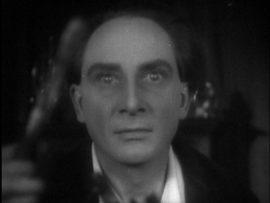
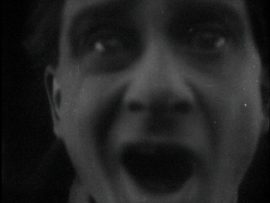
The division and multiplication of gestures in this poem “about” photogénie indicates the cinema’s ability to render events both through suggestion (“half-gestures”), much as a poem might (“half phrases”), and through repetition. Photogénie allows for the relapsing of time and movement, just as it expands out through the extrapolation of meaning signified in half-gestures. Epstein at times literally repeats gestures for an effect, as he does in La Chute de la Maison Usher. But he also allows the image to speak for itself—“a monologue of a single face”, or a close-up that delivers its meaning through an incomplete gesture. Moreover, as in Usher, the close-up image—its excess, its repetition, its fixation on the smallest mobility of the face as a way of accessing something about the person or object depicted—serves the narrative and simultaneously operates in excess of any narrative function. Roderick Usher’s face and strokes of the paintbrush are rendered in slow-motion at moments to emphasize the oneiric quality of the moment, and the close-ups underline his rapt concentration or horrified trauma as part of its narrative function (it serves as motivation for his actions) at the same time it remains outside of it (depicting a sheer emotional state for its affective frisson).
Epstein is best known for developing the concept of photogénie, but several of the authors in the Jean Epstein: Critical Essays and New Translations collection revisit, revise, and expand on the way that term has hitherto been understood, placing it in the broader contexts of Epstein’s work and the history of film theory. For instance, Christophe Wall-Romana revisits photogénie to argue that Epstein’s formulation of the concept relies on an early understanding of interoception, the body’s inner sensations of itself. Wall-Romana shows that only interoception allows us to flesh out the mechanism of photogénie as a haptic contact between the viewer’s self-animation and the animation of cinema, and even of the world itself—hence Epstein’s extreme focus on faces and fluidity. Kirtland has also reassessed the import of photogénie by tracing its genesis in Epstein’s early works of literary criticism, La Poésie D’aujourd’hui: Un Nouvel État D’intelligence and La Lyrosophie. She argues that Epstein upholds a position where rational thought, purely denotative language in poetry, and formulaic devices in cinema are ineffective vehicles for genuine emotional or aesthetic effects and reflects on how Epstein allows that the artist might skirt the boundaries of conscious intellectual elaboration in order to trigger the revelatory potential of photogénie. The filmmaker Érik Bullot, in his essay “The Plasticity of Photogénie”, focuses on the tension generated within Epstein’s definition of photogénie between action and disruption, a tension he sees demonstrated metaphorically in Epstein’s focus on the shifting nature of volcanic forms—lava, explosion, hardened rock—in The Cinema Seen from Etna. Bullot asks how Epstein’s formulation of cinema’s nature might be redirected in a digital age and considers Sergei Eisenstein’s notion of “plasmaticity” as a way of reinterpreting Epstein’s ideas for later avant-garde filmmaking practice, including Bullot’s own.
Related to these broader re-conceptualizations of photogénie, another important take on Epstein’s theory involves his serving as a proponent of the “revelationist” tradition in cinematic discourses. Several scholars have noted the way Epstein’s work seeks to “reveal” aspects of the world before the camera, including Jacques Aumont, whose essay on what he has termed Epstein’s cinégraphie observes a schism between Epstein’s early and late articulations of photogénie and proceeds to uncover the philosophical foundations that inform the development of his thought. Ultimately, Aumont argues, Epstein’s work suggests that cinema allows us to test the reality of the world against our own, inferior powers of interrogation. Cinema surpasses human perception and grants us access to the unseen laws of the universe. Of course, Malcolm Turvey, in his book devoted to this subject, Doubting Vision: Film and the Revelationist Tradition, has upheld this aspect of Epstein’s work in greatest detail, noting that Epstein’s work fixates on the cinema’s “ability to uncover features of reality invisible to human vision” (Turvey, 2008, p. 3). He therefore argues that Epstein adopts an approach that combines two traditions in cinema studies—that of the “creationists” and the “realists”. As Turvey has put it, “for Epstein, what are normally thought of as transformational, creative cinematic techniques such as slow motion and extreme close-ups actually function to unveil certain aspects of reality the human eye cannot see alone”.
While Wall-Romana has cautioned that Turvey’s reading represents one of the possible “mischaracterizations of Epstein’s theory” that comes from putting too much emphasis on the technological aspects of his theory without the counterbalance of “the embodied experience of the viewer”, the idea of revelation may be seen as a crucial part of a negotiation between reality and creativity in Epstein’s work. Several scholars have adopted a view on this matter; for instance, in his essay on this site, “Lover’s Discourse: Cinephilia”, or, “The Color of Cary Grant’s Socks”, Tom Paulus comments on the productive merger between the automatic and the creative in Epstein’s work, remarking: “…essentially, Epstein’s aesthetics is an automatist one, attributing the camera’s disclosure of photogenic moments to its automated registration of a reality that, shall we say, too ‘full’ to be grasped by the human eye, let alone processed by our limited cognitive capabilities”. And addressing the merger between creativity and realism in Epstein’s work, Gunning notes: “As a synthesis, cinema did not simply combine the various arts, but put them on a new footing, defining them not as a mode of representing the world, but as a way to penetrate it, even uncovering a world beyond human experience: exploring the realm of matter, of the données of consciousness, especially revealing the laws of time amid the deepest layers of motion and matter”. However one might choose to characterize the relationship between the world as it is and the cinema as art form within Epstein’s work, it is clear that he invests in creative aspects of the cinema through its technologies and their imaginative management, as well as in its realistic aspects through his investigation of the world, particularly in the remote locations where he frequently filmed beginning in the late 1920s.
Other concepts important to Epstein—ideas he investigated in detail at various times in his career, such as lyrosophie, slow motion sound, and somatic fatigue—demonstrate the breadth and diversity of his intellectual interests. He read widely in several other fields, including literary studies, religion, and the sciences, as Chiara Tognolotti has demonstrated in her research into the Epstein archives. Perhaps part of what is so appealing about studying Epstein now is that he was both a careful, profound reader and a touche-à-tout, with his intellectual finger in every pie. As it did in his own moment, that sort of interdisciplinary, intermedial, cultural and intellectual xenophilia and cinephilia fits well with the present atmosphere for studies of cinema. Further, if photogénie is Epstein’s most productive theoretical concept, it cannot be understood apart from his lifelong engagement—both in prose and on film—with the stylistic features, technical devices, and culture of interdisciplinary mania that facilitate it.
Epstein’s career as a filmmaker, spanning twenty-five years, is comprised of almost three dozen films that offer practical insights about cinema and the experience of modernity, and that demonstrate Epstein’s efforts to realize in practice concepts that originate in his theory. His film works often mobilize a surfeit of stylistic devices—a sequence comprised almost entirely of close-ups unanchored by a sense of their relation to each other during a narrowly-missed bar fight in Coeur Fidèle (FR, 1923), a bravura tracking shot moving speedily up and down a line of a singer’s admirers in Le Double Amour (FR, 1925), a series of triple superimpositions in L’Or des Mers (FR, 1932), slow-motion sound in Le Tempestaire (FR, 1947), etc.—but even in excess, these are part and parcel of a larger purpose and not overindulged for the sake of the visual experiment alone. As Kirtland notes in her dissertation chapter on photogénie, Epstein “shares Delluc’s conviction that a stylistic device is only warranted if necessary, and even then by the simplest possible means”.
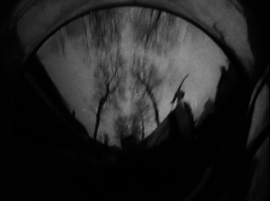
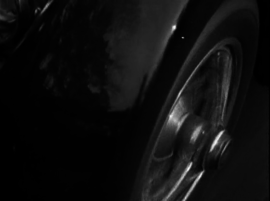
Take, for example, a sequence in the film L’Homme à L’Hispano (FR, 1933), in which the protagonists take a pleasure drive in the eponymous car. The sequence lasts over two minutes and has no dialogue. At its commencement, the car drives along the beach, down a tree-lined motorway, along hillsides and past scenic sights. It cuts from shots of the road receding in the distance to shots of the open road in front of the car; at times, Epstein focuses on the car itself, providing close-ups of its reflective surfaces, making refracted patterns of trees and houses they must be passing as they drive. It recalls the famous sequence of the runaway train in Abel Gance’s La Roue (FR, 1923), which Epstein admired, in some important ways, not least of all in its excesses in the depiction of direction and in its accelerated montage. (Only here, in Epstein’s film, catastrophe does not ensue from this particular series of shots—that will come later.) So the sequence’s visual excesses are apparent and engaging, but the succession of shots serves a number of narrative functions at the same time. First, it represents the enactment of the wish for the couple to be together as a couple, depicted through this specific action (playwrights sometimes call this “related business”). Further, the man of the title drives the car, showing that his lover has capitulated to his control of the situation. In related fashion, their drive becomes the moment at which the lovers let go of their various obligations, and the peculiar giddiness of the sequence reflects that catharsis. Additionally, in connection with the sequence that immediately follows it, this moment demonstrates important traits of the key characters in the drama. While the lovers magically appear in the car and are already moving at almost the same moment as they have decided to travel “everywhere” together, the next sequence shows the woman’s downer of a husband having difficulty exiting an airplane. He has to be assisted by a servant, and appears slow and clumsy in his movements. When he finally gets steady on his feet, the servant has to rush ahead of him to open the car door for him. The contrast between the extreme motility of the couple amidst technologies of travel against the unsteady lumbering of the antagonist comes out through the fast cutting and dynamic imagery in the first sequence and the slower shots in the second. Finally, it may also be said that the film engages Epstein’s interests in the tension between mobility and a point of stillness for contemplation/reflection (literally): for instance, while they drive all over the place, they do not really go anywhere except closer together.
In addition to this tempering of stylistic excess, especially later in his oeuvre Epstein began to use cinematic devices in order to put greater emphasis on film’s relationship to the material world, to the spectator, and to notions of realism. Francesco Casetti has noted, for example, how Epstein’s work points to the camera’s mechanical quality as well as its capacity to transform the observed object in the world: “…it is equally an observer and a player in the story. We access things through its eye. This eye—gathering what others do not see—functions as an intermediary of the world” (Casetti, 2005, p. 60). Within the films, Epstein reveals himself to be a filmmaker clearly invested at least as much in the layers of representation of the world before the camera as he is in exploiting the devices of the camera for vivid visual effects. It becomes clear that he worked at the fault line between realistic representation and imaginative creation, with sometimes-eruptive results. Epstein, in both his writings and his films, negotiates the tripartite encounter of the camera, the human, and the world. In her essay “A Different Nature”, Rachel Moore addresses one of Epstein’s last films, Le Tempestaire (1947), filmed in a fishing village on Belle-Île off the coast of Brittany, to demonstrate the way in which Epstein deploys cinematic devices to interrogate the fine line between strangeness and difference within the real lives of Epstein’s non-actors (inhabitants of the islands where he filmed). Moore claims that Epstein uses situations in which the camera encounters otherness to demonstrate the power of photogénie.
Several of the Brittany films similarly engage these matters of the real in relation to cinema’s unique nature. Epstein brought this modern art form par excellence, as cinema was often characterized then and continues to be now (as it adapts according to changes in its technological basis, consumers’ preferences, and producers’ push against its boundaries), into an environment at quite a remove from modernity’s accoutrements and concerns, in part to explore connections between the pre-modern and the modern. Such connections are rife in a film like Finis Terrae (Epstein, FR, 1929), where modern medicine and the electricity of the lighthouse ameliorate the dangerous lives lived by the fishermen and their community, supplementing while not promoting the rejection of their deep-seated traditions. Sequences like one depicting the fever dream of one of the characters, with its subjective camera mimicking his delirium, are motivated in part by showing off the capacities of the medium to create visual states not otherwise accessible to the viewer, even while it grounds the drama in character, situation, and the rocky specifics of its setting.
Ultimately, photogénie, tied intimately to the idea of cinephilia, also offers a way of thinking about several of the issues of the current, changing media environment. If the close-up is the “soul of the cinema”, as Epstein tells us, mobility is its primary state of being. Epstein accordingly declares: “I have never understood motionless close-ups. They sacrifice their essence, which is movement” (Abel, 1988, p. 236). This aspect of Epstein’s conception of photogénie underlines the idea of becoming, and suggests that quite possibly the mobile small format film, for instance, is not that far off from a differently-ideal platform for the consumption of and merging with images that seem to approach us, closer and closer. As Epstein reminds us in several of his later writings, we have tended to fixate on how what we perceive (any kind of sensory information) relates to the human scale. But the cinema assists us in understanding and transcending this relativity. He would convince his reader that she shouldn’t be too anxious about the ground once thought of as solid now shifting beneath her, even though “[the] scholar, the philosopher, and the cineaste all wonder with deep worry what the power of the mind will be in worlds where permanent structures that seem necessary to any kind of knowledge are loosening, dissolving, and fading away”. Once it is recognized that change is the only constant, Epstein assures us, we might learn to gamble on it instead of too-tired, too-rigid systems. Far from being merely a historical construct, photogénie, with its emphasis on mediating technology and art, its insistence on the beauty of becoming, and its dependence on whatever is constantly changing, might be just the term to help shepherd the cinephile into the twenty-first century.
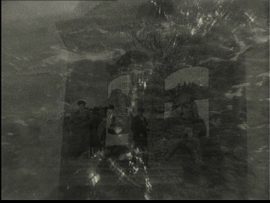
Bibliography:
Abel, Richard. French Film Theory and Criticism: A History/Anthology: 1907-1939. Princeton, NJ: Princeton University Press, 1988.
Aumont, Jacques. Jean Epstein: Cinéaste, Poète, Philosophe. Paris: Cinémathèque Française, 1998.
Cassetti, Francesco. Eye of the Century: Film, Cinema, Experience, Modernity. New York: Columbia University Press, 2005.
Doane, Mary Ann. “The Close-Up: Scale and Detail in the Cinema.” differences: A Journal of Feminist Cultural Studies 14.3 (Fall 2003): 89-111.
Elsaesser, Thomas and Malte Hagener. Film Theory: An Introduction through the Senses. New York: Routledge, 2010.
Keller, Sarah and Jason N. Paul, eds. Jean Epstein: Critical Essays and New Translations. Amsterdam: Amsterdam University Press, 2012.
Tognolotti, Chiara. “Jean Epstein’s ‘Intellectual Factory’: An Analysis of the Fonds Epstein, 1946-1953.” Dall’inizio, alla fine. Teorie del cinema in prospettiva / In the Very Beginning, At the Very End: Film Theories in Perspective. Francesco Casetti et al., eds. Udine: Forum, 2009.
Turvey, Malcolm. Doubting Vision: Film and the Revelationist Tradition. New York: Oxford University Press, 2008.
